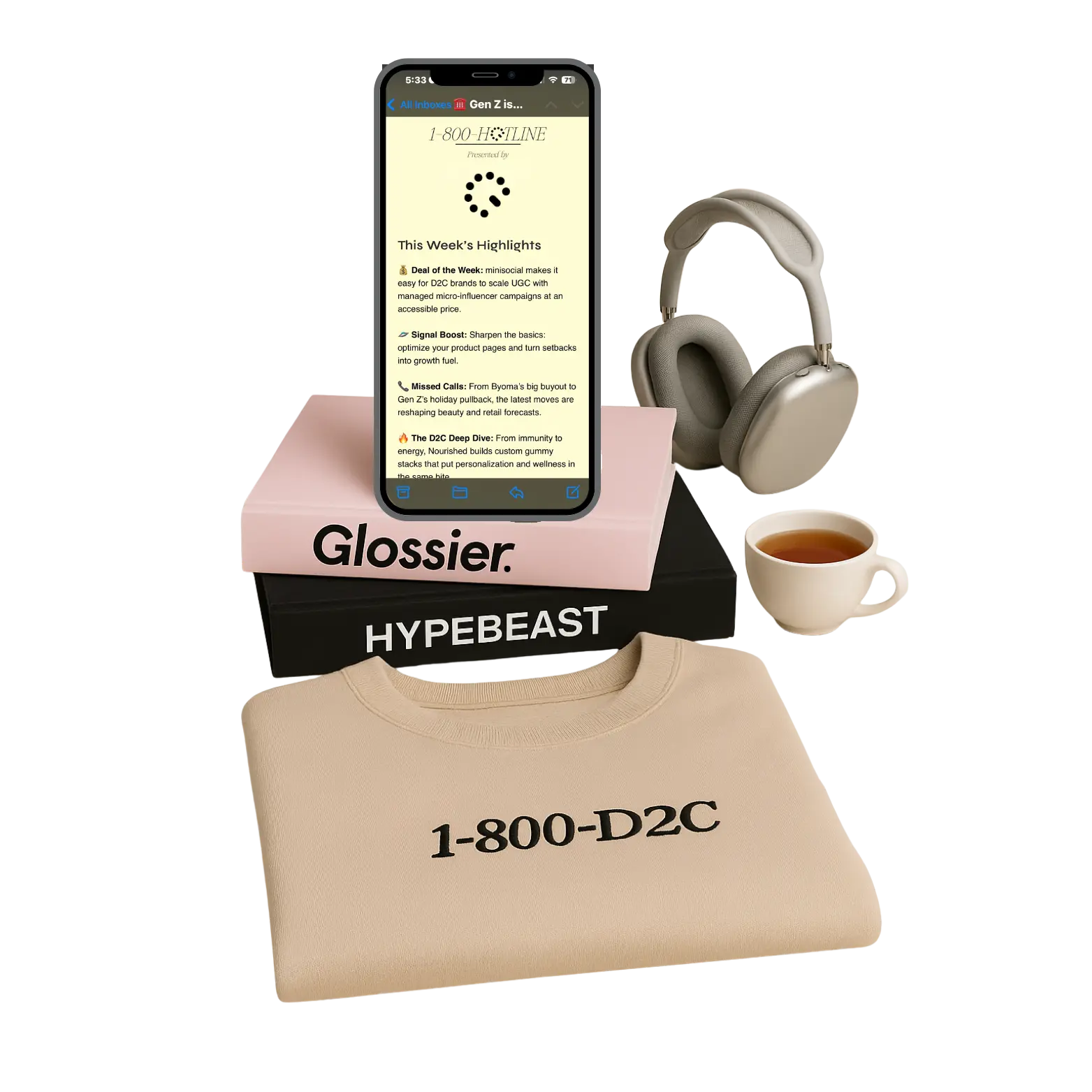
Jess: My name is Jess Cervellon and I have over 15 years of experience in CX and marketing, both on the B2B and B2C sides. Most recently, I was an employee at Feastables, one of the largest crater LED brands. Now, I work as a fractional CMO or CXO depending on the project. Currently, I am working with two major brands, Fat Milk and Salud, as well as other smaller brands for marketing and CX campaigns.
I am excited about what's to come in 2024. In this conversation, I think people are shifting their focus from just marketing for acquisition and retention to considering the overall brand experience. Many brands are now expanding into retail and bridging the gap between their digital presence and real-life brand experiences. This shift allows them to not only engage in activities but also build brand loyalty and increase purchases within their community. It's an exciting emphasis on creating a meaningful brand experience rather than just selling products.
When I say "creator" and "celebrity," the latter can even refer to a micro influencer. People have realized that content can effectively sell a product, so there has been a shift in perception. Influencers are brands themselves and their world is an experience. This translates into e-commerce as well, where the goal is for consumers to have an immersive experience with the product. Social media and content play a huge role in shaping this overall experience, and we have seen this trend continue to rise in recent years.
Jess: When considering a brand's experience and marketing in the digital world, it is important to remember that each social media channel, whether it be Instagram, TikTok, LinkedIn, Twitter, etc, may have a different voice, but the overall experience should remain consistent. The goal is to guide consumers through the digital landscape and ultimately lead them to make a purchase. This requires careful consideration of the checkout process and user experience across all platforms. However, it becomes more challenging for brands when their products transition from the digital world to physical shelves. In this scenario, they have less control over the customer's experience, as they can't control what happens on the shelves themselves.
There's no telling if Walmart is going to actually put your product out when they say they will. You can only control your packaging and the experience with your product.
When it comes to digital, you want your customer to have a smooth journey without any friction, just like in a retail setting. And speaking of retail, you also want consistency when customers pick up your product. While you can't control everything, you can at least ensure that your packaging and product are top-quality. The goal is to bridge the gap between the physical and digital world by leading customers back to your website. Just as you do this digitally, you should also think about how to do it on the shelf. There are many different tactics that can be utilized for this purpose.
Jess: You can't control any of the things that are on the shelf, but what you can control is how your customer loops back to your website or loses back into your area. One thing that I always highly suggest is throwing a QR code from Brij on the packaging. This is something we've done for Peacefuls and will also do for Fat Milk.
The QR code can lead to multiple different types of places - it can lead to your website, but then at that point, you might lose the traffic. What do you want to know about the traffic? It's great if they go onto your website, but what I'm trying to do for both festivals and Fat Milk is have the QR code lead to a specific digital experience. One of the tools I use for this is Brij because it allows me to do more than just provide a link.
I can throw in surveys, education about the product, and more behind the QR code. This is why I'm so enthusiastic about using QR codes on packaging - it allows me to gather data on my customers. Through a survey behind the QR code, I found that 90% of respondents were Walmart purchasers or retail purchasers. Going even deeper into their responses, I learned about their experiences with our brand. My point is whether you sell through Walmart or have your own brick-and-mortar store, you should have some sort of experience on the packaging that brings customers back into the full compass of your brand experience.
Jess: There’s a lot going on with Feastables from a digital perspective. I can't really talk about the demographics, but I can discuss the behaviors. Since Feastables is an online product, it tends to attract a younger generation. It's less about convincing parents to buy it and more about being discovered by the consumer themselves. In-store, there is a chance of stumbling upon it, like seeing a Mr. Beast chocolate bar and wanting to try it. But online, users are intentionally searching for the product or are directed to the website through content.
Another noticeable difference is in purchasing behavior. In retail stores, people may only buy one bar at a time and then try it again later. But online, they are forced to purchase a minimum of 10 bars at once. This affects the Feastables consumer behavior significantly and makes it very distinct from other brands.
Similarly, my other brand Taste Salud also has different discovery methods depending on whether it is found in Target or online. In Target, it is discovered organically as a highlighted Latino brand, while online, users are driven to the website directly through related content. So while both methods involve discovery, they are very different in terms of intentionality and approach.

Brij is a no-code platform that helps brands create QR code experiences. When brands sell through retail & marketplaces like Amazon, they have no data on their customers – Brij helps to “bridge” this gap. That's where Brij comes in. They build beautiful mobile-first experiences for 1st party data capture, warranty / product registration, reorder & subscription – and view the analytics to understand your engagement, all of which is fully integrated with your tech stack (Shopify, Klaviyo + 5,000 other integrations).
Jess: When it comes to retail and digital, I believe we should focus on QR codes. They are redefining what a QR code can do in just one month, we had over a million scans on our QR code. That's an incredible number!
So let's make it more than just a link tree, let's make it fun and engaging. Use it as an opportunity to educate customers and direct them to your social channels or customer experience team. You don't always have to say "find us here," get creative and put content behind the code.
And speaking of being scrappy, you can even include a survey to collect data about your retail customers. Just be cautious with demographic information for privacy reasons. But this is a great way to learn more about your customers without spending thousands of dollars on data.
Jess: There are multiple ways to approach this. I am considering the consumer personas and behaviors that I want to target. My goal is to bridge the gap between traditional retail and digital marketing. Another aspect to consider is utilizing the free data available through Walmart, which can provide valuable insights for their buyers.
Instead of solely focusing on what we can do for Walmart, I believe it's important to use survey data to improve our products and marketing strategies both in-store and out in the market. This will allow us to expand our reach and get our products into the hands of more consumers.
Jess: There are two brands that I find interesting to discuss in the canned fish market. The first is Wise Fish Wife, a standout company on the shelves of Portugal despite the oversaturated market. They really stand out in their packaging and have a strong brand ambassador program to educate customers on why they should choose their products.
Another standout brand is Aura Bora, known for its fun and innovative packaging in another crowded market. They also use QR codes on their cans, but unlike most other companies, theirs lead to interactive games. This cleverly bridges the gap between physical and digital marketing, adding a fun and whimsical touch to their brand experience both on shelves and online.
Discover new D2C brands, new eCommerce tools and read in-depth founder reviews each week.
